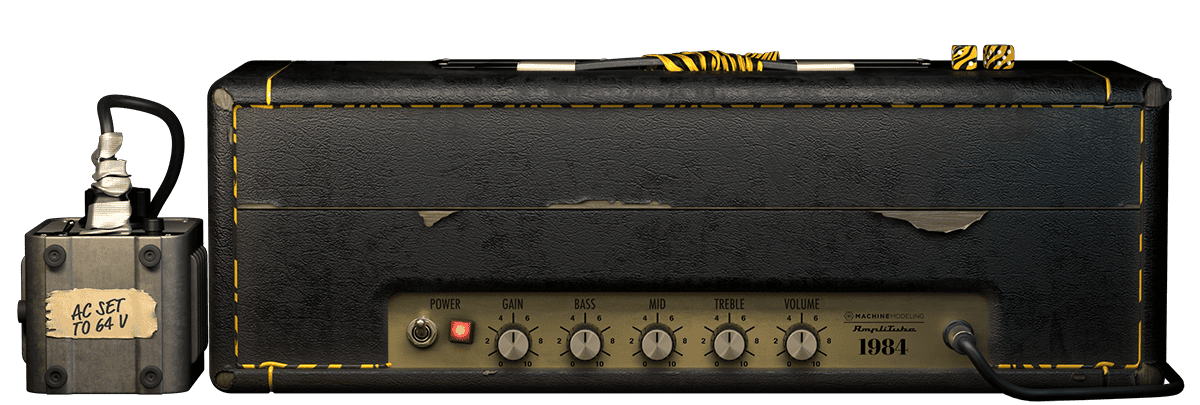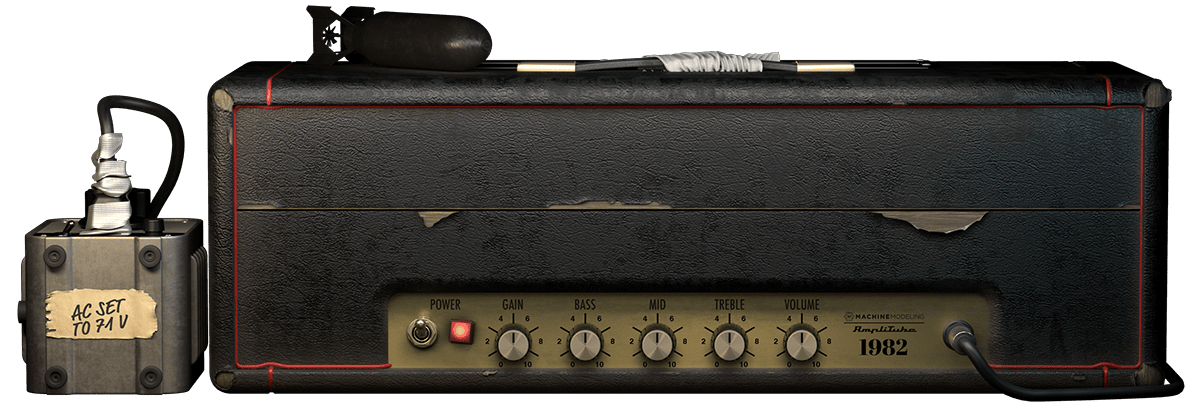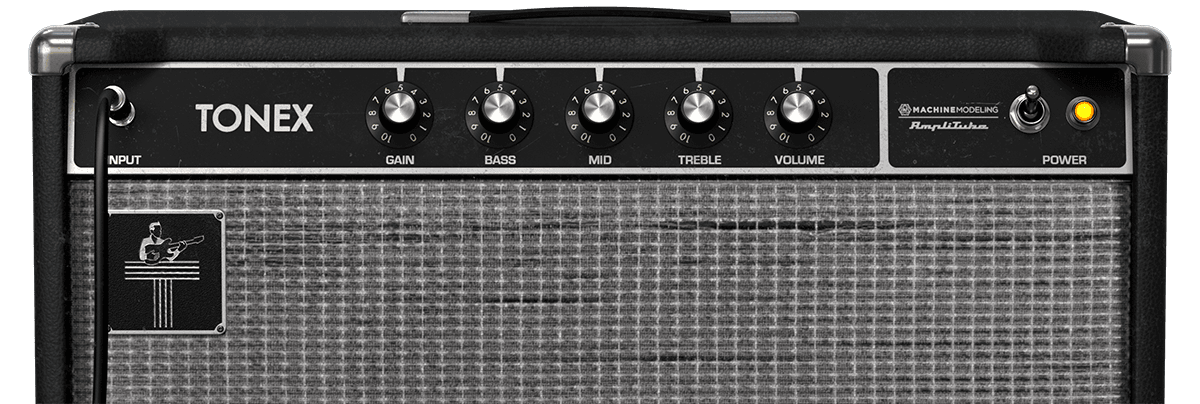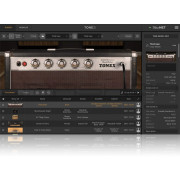You're currently on:
- ホーム
- >>
- IK Multimedia TONEX Brown Sound 82/84 Collection

Tonex Signature Collection
A new dimension of depth and detail
The Brown Sound 82/84 is the final installment in our limited TONEX Brown Sound series. This collection features 83 carefully crafted Tone Models, including several amp-only captures for use with your favorite IRs or running through a real cab on stage. As the push for radio-ready hits grew stronger, the Brown Sound became tighter, more refined, and more polished without losing its iconic edge. Experience the evolution of a legendary guitar tone during an exciting period of increased studio precision and musical ambition.
We didn’t just chase the tone; we explored every possibility, delivering both authentic recreations and thoughtful variations to reflect the many theories about how these legendary tracks were recorded. Grab your single-pickup “hockey stick” guitar and plug into the most authentic recreation of this legendary sound.

Collection Overview
- 83 exceptional Tone Models for use across the entire TONEX ecosystem
- Based on a ′68 Marshall Super Lead modified to serial number #12301 specs
- Models feature multiple 1960 Marshall cabs with different speakers and amp-only captures
- Details include various Variac™ settings, and run through a specific signal path for vintage tone
- Captured using period spec studio gear, just like the original recordings
- Created using AI Machine Modeling™ technology with advanced training
- Compatible with all TONEX software versions, including the free TONEX CS
- Tone Models can be easily loaded to TONEX pedals for live performance
As with all collections in the series, these Tone Models were crafted using period-correct gear and capture techniques to recreate the final two albums of that era genuinely. Each Tone Model reproduces the recorded album tone in exquisite detail, offering an ideal foundation for adding time-based effects—either within TONEX or through your favorite pedal.
1982 Tone Models
The ’82 sessions introduced a brighter, more layered tone while preserving the core character of the previous recordings. The G12-65 speaker remained key to the sound, delivering a tight low end, warm midrange, and a smoother, less spiky high end than the earlier Greenbacks.
Some Tone Models exhibit almost single-coil-like clarity, especially noticeable in the open strings and low E punch of the fast blues shuffle. Recorded in Amigo studios, changes in mic placement and outboard gear added polish and dimension, resulting in a more refined studio sound. It’s a clear next step in the evolution of the Brown Sound, still punchy and aggressive, but with added shimmer, depth, and separation.
To give players even more flexibility, this collection includes amp-only captures along with multiple Variac settings, cabinet configurations, and gain stages, offering a full range of tonal textures from tight and clean to harmonically rich and saturated.

1984 Tone Models
The ’84 sessions marked a leap forward in tonal precision and production quality. Tracked and mixed at a newly built studio in Coldwater Canyon, the sound became more controlled and processed, yet still retained the grit and energy of earlier recordings. The suspected use of Telefunken EL34s likely contributed to the added warmth and mid-forward presence, while amp tweaks and precise Variac adjustments gave each track its own tonal identity.
Though the core cab and guitar setup remained consistent, every detail, from mic placement to EQ decisions, was carefully refined to suit the studio’s minimalist gear and shifting creative preferences. These captures deliver TONEX users a tone that’s massive, articulate, and studio-ready, engineered as the perfect foundation for layering time-based FX and recreating the iconic sound of their most commercially successful release.

The amp: “The ONE”
At the heart of the Brown Sound 82/84 collection is “The ONE” — a meticulously crafted Marshall-style amp built from the ground up with the exact same spec as the infamous 1968 Super Lead serial number #12301, including crucial mods that capture the DNA of the early brown sound like no other amp model.
A big part of that sound comes from the Fat Cap mod, a custom tweak to the preamp’s second gain stage that increases low-frequency gain and creates that signature chewy midrange and hair on every note. Combined with a 50K mid pot (which shifts the EQ balance toward a more vocal, aggressive midrange), as found on the legendary #12301 Plexi, the amp punches with the exact presence and attitude heard on the earliest Brown Sound recordings.

A 100K NFB (Negative Feedback Resistor) from a 4Ω tap was added to the amplifier to further refine the distortion characteristics, making the tone a little bigger and bolder, just like those early recordings.
Under the hood, Heyboer transformers (faithful recreations of the original Dagnall iron) deliver the correct dynamics and feel that only properly wound vintage-style transformers can. These aren’t just clones; they’re the backbone of the amp’s response and harmonic complexity.

No tone unturned
Every decision in Brown Sound 82/84 was made to capture not only the gear but also the energy, experimentation, and sonic evolution of the era. From confirmed setups to widely debated studio techniques, this collection features all variations necessary to achieve the tones on those albums for all players.
Each 82/84 Tone Model was designed by adjusting four controllable levers—Variac voltage, speaker/cab voicing, mic geometry, and an optional parallel load—allowing for A/B comparisons of era-accurate changes. Voltages are approximately 68V/73V ('82) and 68V/72V (’84); the parallel load is a 20Ω/200W unit wired at the speaker jack (keeping the speaker path direct) to subtly lower the level and reduce high-end sizzle.

Speakers include G12-65 ('82), 20W Greenbacks ('82/'84), 25W Greenbacks, and 25W Blackbacks ('84). Both eras use an angled (off-axis) dual-mic approach to maintain the desired “fizz" while keeping it controlled. The '84 set reflects the minimal front-end used then (without flanger/phaser/Echoplex) and captures the "feel" shift between a high-output humbucker and a lower-output PAF-style pickup.
For real-world use, models are level-matched and offered in paired versions—with and without parallel load across the listed voltages and cabs—allowing you to quickly choose tighter/cleaner versus hotter/denser tones. Amp-only versions are included for players who prefer their own IRs or a real cabinet, and the raw recordings are captured without post-processing, providing a period-correct core amp tone that’s glorious in its own right.


For even greater authenticity, we've included captures that recreate the cleaner tone famously achieved with a stereo guitar through a pair of Music Man 112 RD 65s. A custom EL84 amp was used through a 2x12 combo loaded with JBL D120s and 25W Greenbacks to capture that album tone.
Behind the collection
Jim Gaustad’s obsession with guitar sound began in the late ′70s, sparked by hearing Van Halen’s debut album. From gigging professionally at age 12 to touring nationally with original bands in the ′80s, Jim was always chasing the perfect sound, rebuilding amps on the road, modifying vintage Marshalls, and crafting custom pickups from spare parts. His relentless pursuit of authentic tone led to the formation of The G Men, a no-gimmick Van Halen tribute band known for replicating the original gear and sound. After Ed’s passing, Jim launched the Brown Sound Quest on YouTube, diving deep into vintage circuits, studio techniques, and signal chains to honor the sonic legacy that inspired it all.




















































